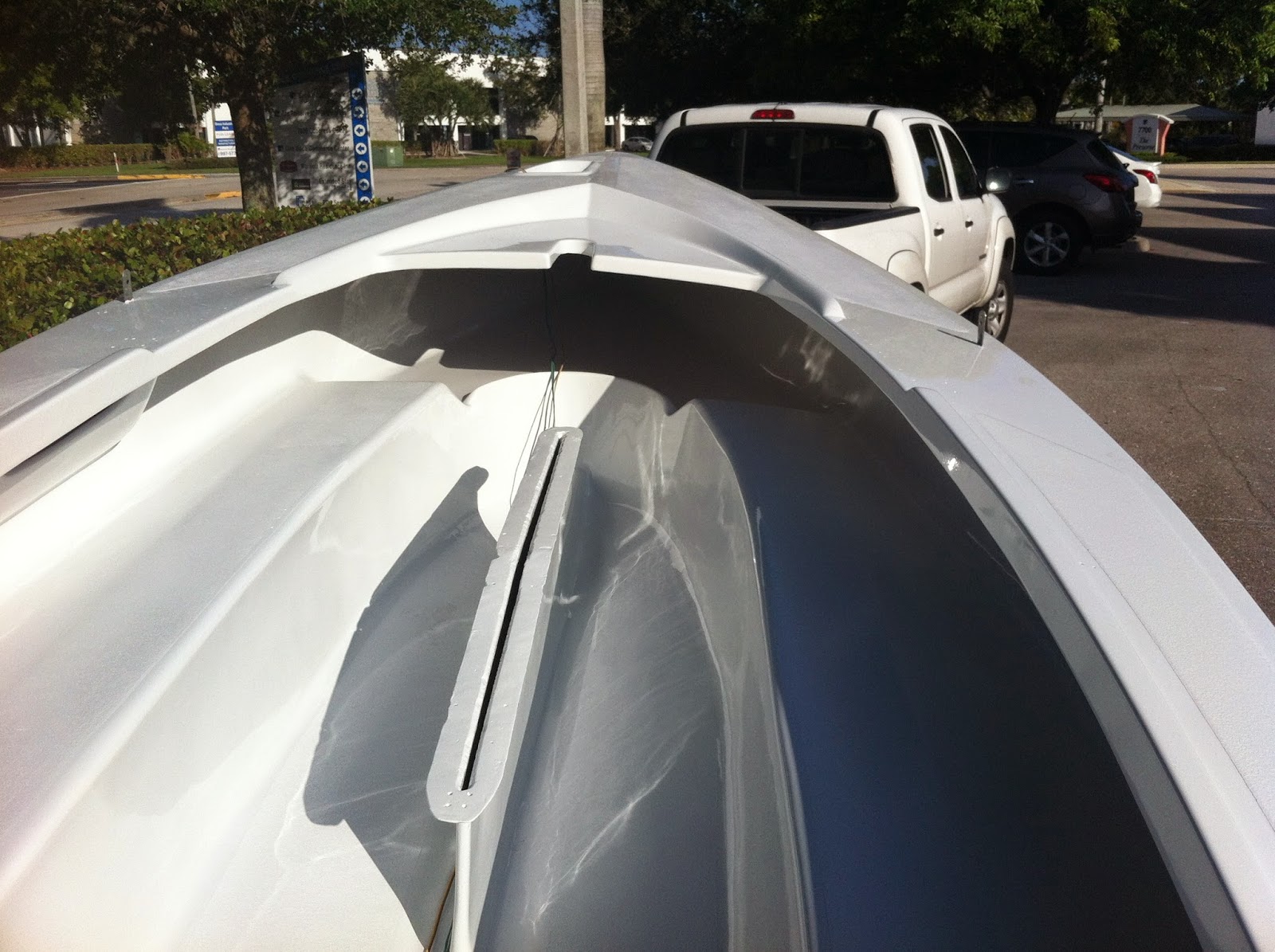Tanzer 16 --Racing small boats--good start--poor finish, October 21, 2014. You need a good start to win, but a good start isn't enough if you don't sail your boat fast. The committee boat provided some pictures that gave us a good look at the start and the finish. To understand what is going on here, you need to see this diagram. The race was held on August 28, but the conditions were exactly the same as July 17. The starting line was laid out in a very odd way like so:
You really couldn't start on starboard tack. The best you could hope for was to run down the line on starboard, then tack into a hole and start on port. Port was the favored end of the line for both weather and position. The first mark was on the port side of the line.
Dealing with the Lasers in our mixed fleet is always interesting. If they get to the line too early, they just capsize their boat for a few seconds. Then they right the boat, and take off like they came out of a slingshot. The sequence below is from two starts, but they were almost identical so I substituted one picture.
1. We were barrelling down the line on starboard and could have made the C-Lark bear off. But, we were just a tad early. He was a little earlier.
2. We told him to hold his course and ducked behind him. He was early and had to luff to avoid being over the line early. The O'Day on the right was way over early and had to restart.
3. The same thing happened the next time, but this time we tacked behind the 420 instead of the C-Lark. Same result both times. We got to the line about 1 second after the start going full speed. The boats that we allowed to maintain course got to the line early.
3a. Out on the course. We started ahead of the 420 and C-Lark both times and tried to cover their tacks. We were only successful until we reached a long windward tack. Both of them could out point us by one or two degrees. Both sailed a teeny bit faster. (The C-Lark owes us a few seconds, and we owe the 420 a few more seconds on the Portsmouth Yardstick Handicapping Table.)
4. We made up some distance on the downwind leg, but not nearly enough. In case you can't see the sail, we are last--they were a few people behind us, but they were way behind us. This is the part of the fleet we need to beat.
Things we learned.
- I screwed up and didn't ease the topping lift enough. That prevented us from flattening the main the way we should have on the upwind legs.
- Our tacks were sharp and clean, but we need to fine tune how long we hold the jib to backwind the bow and give us that tiny extra push to the next tack. We did bear away cleanly on the new tack with no over steering.
- When the wind picked up to anything over 12 knots it was too difficult to use the traveler. We need to add a block and gain a 2:1 mechanical advantage on our traveler set up. The blocks are here and we'll make that adjustment when we have the new, hinged mast step working.
- We need to keep the boat flatter on the upwind legs by moving our weight forward, better use of the hiking stick. We probably need to add hiking straps. But we are a little old for that, and one of us has a plastic and steel knee. We'll think about it!
- We need a better pole to hold the jib out on downwind legs. (We already got a new spinnaker pole.)
- We still need a new Genoa for next year. This was a very unusual summer in Budd Inlet--good wind almost every Thursday so the regular jib was plenty of sail. I continue to bug our sail supplier in Quebec.
Today's cliche: It's okay to make mistakes--as long as they are new ones.









.jpg)







































